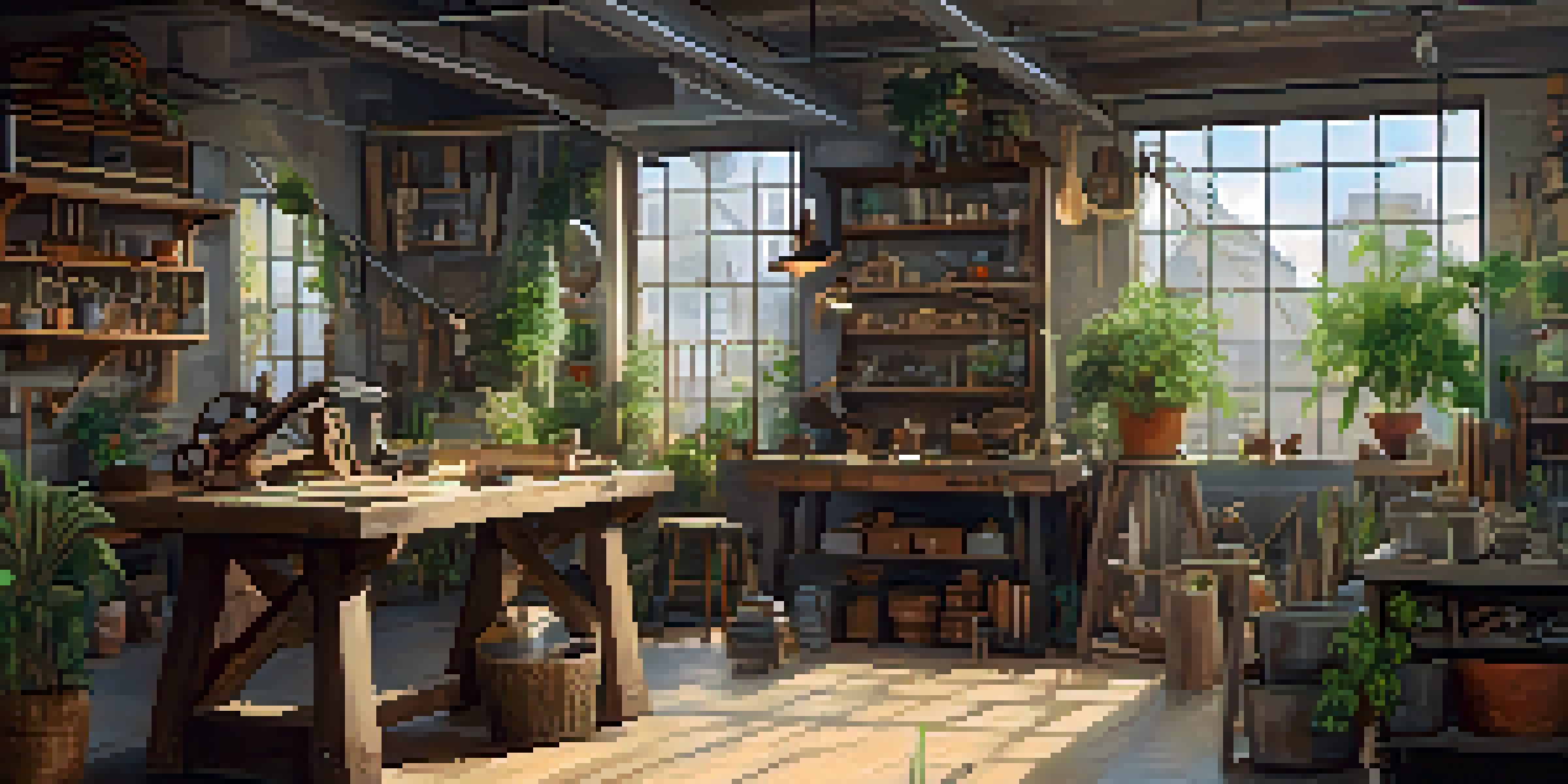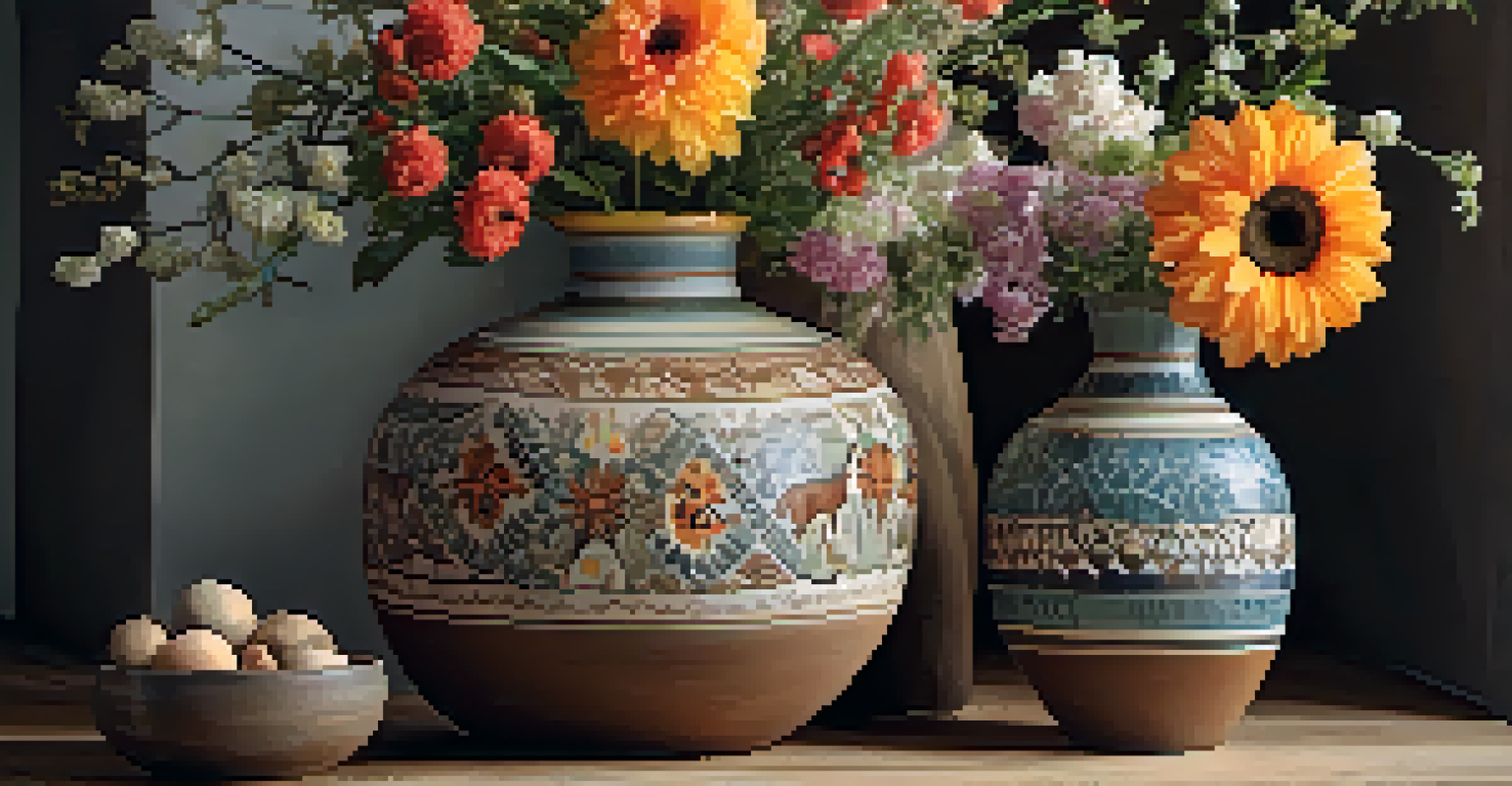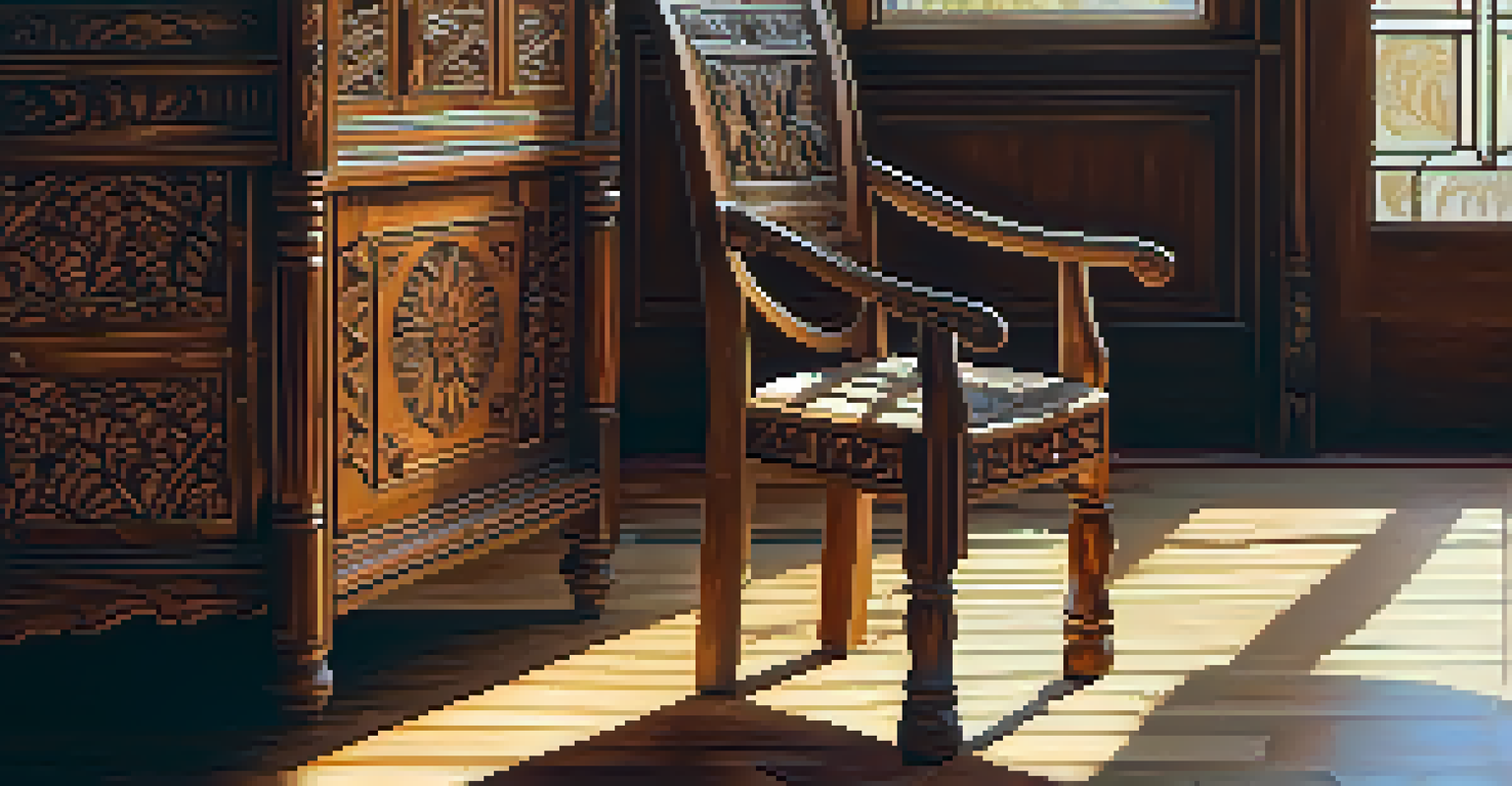The Impact of Detroit on Arts and Crafts Design Principles

The Birth of Arts and Crafts Movement in Detroit
The Arts and Crafts movement emerged in the late 19th century as a reaction against industrialization. In Detroit, this movement took root as artisans sought to bring craftsmanship back into everyday life. The city became a hub where skilled workers and designers collaborated to create functional yet beautiful objects.
The arts are not a copy of nature; they are a reflection of our humanity.
Key figures, like architect Albert Kahn, played a significant role in promoting this movement, blending traditional craftsmanship with modern techniques. Their work emphasized the importance of handmade items, reflecting a belief that beauty could enhance daily living. This philosophy resonated deeply within Detroit's rich cultural fabric.
As the movement gained traction, local guilds and craft schools sprang up, showcasing the talents of Detroit artisans. These institutions not only preserved traditional crafts but also encouraged innovation, ensuring a vibrant legacy that would influence future design principles.
Detroit's Role in the Industrial Revolution
Detroit's position as a major industrial center during the late 19th and early 20th centuries significantly impacted the Arts and Crafts movement. As factories thrived, many artisans found themselves torn between mass production and the desire for individuality in design. This tension fostered a desire for unique, handcrafted items that stood out from the uniformity of factory-made goods.

The industrial landscape of Detroit also provided artisans with access to materials and tools that were previously scarce. This accessibility allowed for experimentation and the blending of different artistic styles, giving birth to iconic designs that were both functional and aesthetically pleasing. The city became a melting pot of creativity, where traditional methods met modern industry.
Arts and Crafts Movement Origins
The Arts and Crafts movement in Detroit emerged as a response to industrialization, emphasizing the return of craftsmanship in everyday life.
The result was a unique design ethos that celebrated both craftsmanship and innovation. This duality laid the groundwork for future artistic movements, illustrating how industrial progress could coexist with a deep appreciation for handmade beauty.
Influence of Detroit's Architecture on Arts and Crafts
Detroit's architectural landscape is a testament to the city's commitment to design principles that prioritize craftsmanship. Buildings like the Detroit Institute of Arts and the Guardian Building showcase intricate detailing and the use of local materials, epitomizing the Arts and Crafts philosophy. These structures serve as inspiration for both architects and artisans alike.
Craftsmanship names an enduring, basic human impulse, the desire to do a job well for its own sake.
The emphasis on craftsmanship in architecture translates to an appreciation for the arts in other forms, such as furniture design and decorative arts. Many local artisans drew inspiration from the architectural elements of their surroundings, creating pieces that mirrored the beauty of Detroit's buildings. This synergy between architecture and crafts solidified a unique aesthetic identity.
As a result, the architectural styles prevalent in Detroit not only influenced the city's skyline but also permeated the broader arts and crafts movement. The legacy of these design principles continues to be felt, inspiring modern creators to blend functionality with artistic expression.
Artisan Communities and Their Impact
The formation of artisan communities in Detroit played a vital role in shaping the Arts and Crafts movement. These collaborative spaces became hubs where craftsmen could share ideas, techniques, and inspirations. This sense of community fostered a culture of innovation, allowing for the exploration of new materials and designs.
Local events, such as fairs and exhibitions, provided platforms for artisans to showcase their work, further strengthening their networks. This exposure not only elevated individual artists but also brought attention to the importance of handcrafted goods. The resulting appreciation for local craftsmanship helped establish a market for unique, artistic items.
Industrial Influence on Design
Detroit's industrial landscape provided artisans access to materials and tools, fostering a unique blend of craftsmanship and innovation.
These communities also laid the groundwork for future generations of artisans in Detroit. By promoting the value of craftsmanship and artistic expression, they ensured that the principles of the Arts and Crafts movement would endure, continuing to inspire modern designers and makers.
The Legacy of Detroit's Arts and Crafts Movement
The legacy of the Arts and Crafts movement in Detroit is evident in the city's contemporary arts scene. Many current designers and artists draw inspiration from the principles established by their predecessors, emphasizing quality, sustainability, and individuality. This connection to the past enriches the city's cultural narrative.
Moreover, Detroit's commitment to preserving its artistic heritage has led to various initiatives aimed at revitalizing craftsmanship. Organizations and galleries promote local artisans, ensuring that traditional methods are not lost in the face of modernization. This dedication to the arts fosters a vibrant community where creativity can thrive.
As a result, Detroit continues to be a beacon for arts and crafts enthusiasts, proving that the influence of its historical movement is still very much alive. The city's ability to adapt and innovate while honoring its roots is a testament to the enduring impact of the Arts and Crafts movement.
Modern Interpretations of Arts and Crafts in Detroit
Today, the principles of the Arts and Crafts movement are being reinterpreted by a new generation of artists in Detroit. Many are incorporating modern technology and sustainable practices into their work while still honoring traditional craftsmanship. This fusion of old and new reflects the city's dynamic spirit and commitment to innovation.
For instance, contemporary furniture designers are using reclaimed materials to create pieces that are both functional and environmentally friendly. By blending modern design aesthetics with the craftsmanship ideals of the past, they produce works that resonate with today's consumers. This approach not only appeals to eco-conscious buyers but also preserves the essence of the movement.
Legacy of Craftsmanship Today
The principles of the Arts and Crafts movement continue to inspire modern Detroit artists, who blend traditional methods with contemporary practices.
These modern interpretations serve as a reminder that the Arts and Crafts movement's core values remain relevant today. As artists continue to push boundaries, they ensure that the legacy of Detroit's artistic heritage evolves while staying true to its roots.
Conclusion: Detroit's Enduring Influence on Design Principles
In conclusion, Detroit's impact on the Arts and Crafts movement is profound and far-reaching. The city's unique blend of industrial innovation and artisanal craftsmanship has shaped not only local design principles but also influenced the wider arts community. This rich history underscores the importance of creativity in shaping our environments.
As we look to the future, it's clear that the principles established by Detroit's artisans continue to inspire modern designers. Their commitment to quality, beauty, and functionality remains relevant, encouraging new generations to explore the intersection of art and craft. The city's legacy is a powerful reminder of the value of handmade beauty in a fast-paced world.

Ultimately, Detroit serves as a vibrant example of how creativity and craftsmanship can thrive, even in the face of change. The ongoing dialogue between the past and present ensures that the spirit of the Arts and Crafts movement will endure, continuing to shape design principles for years to come.